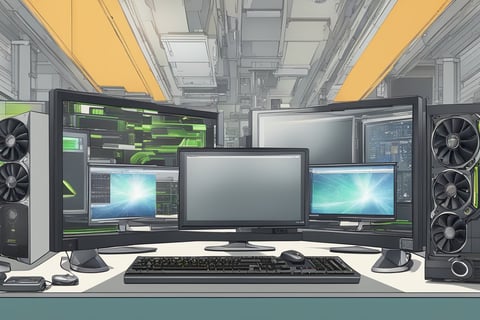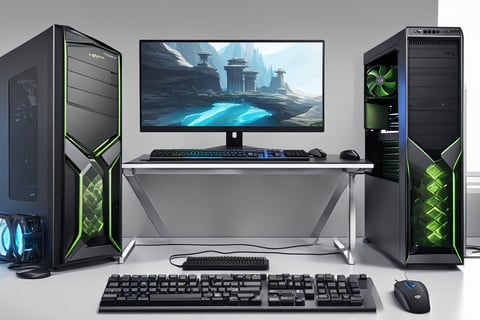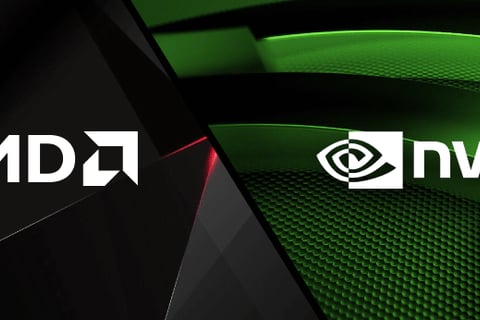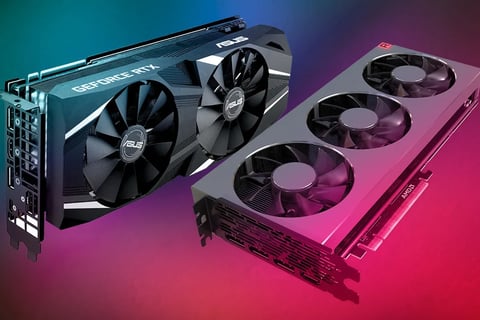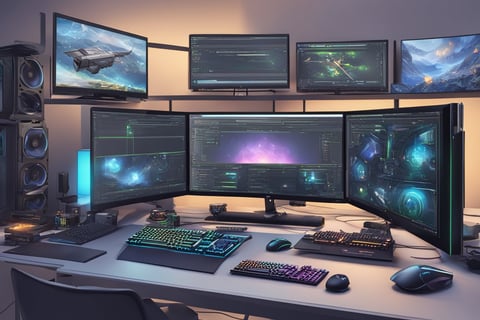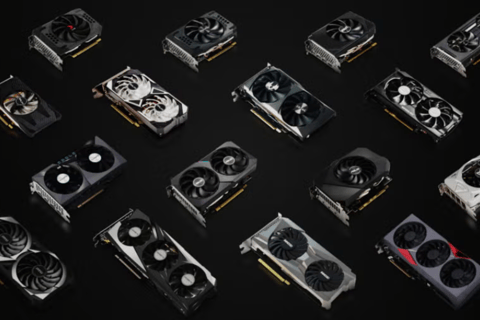NVIDIA vs. AMD: Which GPU Is Best for Gaming
2/20/2025
NVIDIA and AMD have long been at the forefront of the graphics card market, each offering distinct advantages. Choosing the right GPU depends on factors such as budget, performance requirements, and specific use cases, whether for gaming, content creation, or general use. For most users, NVIDIA graphics cards excel in ray tracing and AI performance, while AMD offers competitive pricing and solid performance in traditional gaming scenarios.
Performance benchmarks often show NVIDIA leading in high-end graphics, but AMD has been closing the gap with impressive offerings in the mid-range segment. Additionally, features like driver support, software compatibility, and power consumption can sway a buyer's decision. Understanding these differences can help in selecting the GPU that perfectly fits individual needs.
Readers will benefit from a comparison of popular models from both brands, including recommendations tailored to various budgets and requirements. This guide aims to clarify the essential aspects to consider when making a choice, ensuring informed decisions for optimal performance.
Understanding the Basics
A graphics card plays a crucial role in determining a computer’s performance, especially for gaming and graphic-intensive tasks. Knowing its functions and the primary manufacturers can guide users in making informed choices.
The Role of a Graphics Card
The graphics card, or GPU, is responsible for rendering images, animations, and video for the computer's display. It takes data from the CPU and converts it into visuals by executing complex calculations quickly.
Key functions include:
Rendering: Handles the rendering of images in real-time, essential for gaming.
Video Playback: Manages high-definition video streaming and playback.
3D Graphics: Supports 3D modelling and animations, benefiting creative professionals.
Users can select GPUs based on power requirements and types of applications, from casual gaming to professional creative work.
NVIDIA and AMD Overview
NVIDIA and AMD are the two dominant players in the graphics card market. Both companies offer a range of products catering to different user needs.
NVIDIA features advanced Ray Tracing technology and DLSS, enhancing performance and visuals in supported games.
AMD focuses on offering competitive pricing with a strong performance-per-dollar ratio. Their latest RDNA architecture has improved power efficiency and performance.
Each brand has its strengths, making users consider specific models based on intended use, budget, and feature preferences.
Comparing NVIDIA and AMD
Both NVIDIA and AMD offer compelling options in the graphics card market. Understanding their differences can assist in making an informed decision regarding performance, pricing, software, and efficiency.
Performance
NVIDIA's GPUs typically excel in raw performance, particularly in high-end models such as the NVIDIA GeForce RTX 4080 and the NVIDIA GeForce RTX 4090. These cards often deliver superior frame rates in demanding titles and feature advanced technologies like DLSS (Deep Learning Super Sampling), enhancing gaming experiences significantly.
AMD's latest offerings, like the AMD Radeon RX 7900 XTX, have closed the gap, providing impressive performance in both 1440p and 4K gaming. While AMD may lag slightly behind NVIDIA in ray tracing, they often remain competitive in rasterization performance, appealing to a range of gamers.
Price to Performance Ratio
AMD often boasts a better price-to-performance ratio. Its RX 6000 and 7000 series cards provide robust performance at lower price points compared to equivalent NVIDIA models. This affordability makes AMD a popular choice for budget-conscious gamers seeking value without sacrificing performance.
NVIDIA's cards, particularly in the higher range, can be more expensive. However, their advanced features and optimizations may justify the extra cost for serious gamers or professionals who require cutting-edge performance and technologies.
Software and Drivers
NVIDIA dominates in the software realm with its GeForce Experience. This platform offers easy access to game settings optimizations, driver updates, and built-in broadcasting features. NVIDIA frequently updates its drivers, ensuring compatibility with new titles and improving performance.
AMD's Adrenalin software suite has made significant strides, offering tools like Radeon Boost and Radeon Anti-Lag. While these features are beneficial, AMD's driver updates have historically been less frequent, occasionally leading to compatibility issues with newly released games.
Power Efficiency and Cooling
NVIDIA's GPUs generally deliver better power efficiency, particularly with the Ampere architecture. This efficiency translates to lower power consumption and less heat generation, facilitating quieter cooling solutions.
AMD's GPUs, while powerful, tend to consume more power, especially under load. Consequently, they may require more robust cooling setups, impacting overall system noise levels. Users may need to invest in higher quality cooling solutions to manage temperatures effectively, especially in enthusiast builds.
Top GPU Recommendations
There are various graphics cards available to suit different needs. The following recommendations highlight options for gaming, workstation tasks, and budget-friendly choices.
Best for Gaming
The NVIDIA GeForce RTX 4080 stands out for high-end gaming. With 16GB GDDR6X memory, it excels in 4K gaming and supports advanced technologies like Ray Tracing and DLSS 3.0. This card delivers smooth frame rates in demanding titles and handles VR without issues.
An alternative is the AMD Radeon RX 7900 XT. It offers strong performance with 20GB GDDR6 memory and is an excellent choice for high-resolution gaming. Players appreciate its balance of cost and performance, making it a solid option for those seeking effective graphics without breaking the bank.
Best for Workstations
For professionals, the NVIDIA RTX A6000 is a top-tier choice. Featuring 48GB GDDR6 memory, it is tailored for data-intensive applications like AI, 3D rendering, and complex simulations. Its support for CUDA cores speeds up workflows significantly, making it invaluable in creative industries.
The AMD Radeon Pro W6800 is another strong contender. With 32GB GDDR6 memory, it provides reliable performance for rendering and visualization tasks. Its efficiency in handling large datasets makes it ideal for engineers and designers who require precision and speed in their projects.
Best Budget Options
The NVIDIA GeForce GTX 1660 Super is a popular budget-friendly choice. It offers 6GB GDDR6 memory and performs well in 1080p gaming. This card is advantageous for gamers who want decent performance without spending too much.
Another option is the AMD Radeon RX 6500 XT. With 4GB GDDR6 memory, it provides a balance of performance and affordability. This card is suitable for casual gamers or those looking to upgrade an older system without a significant investment.
